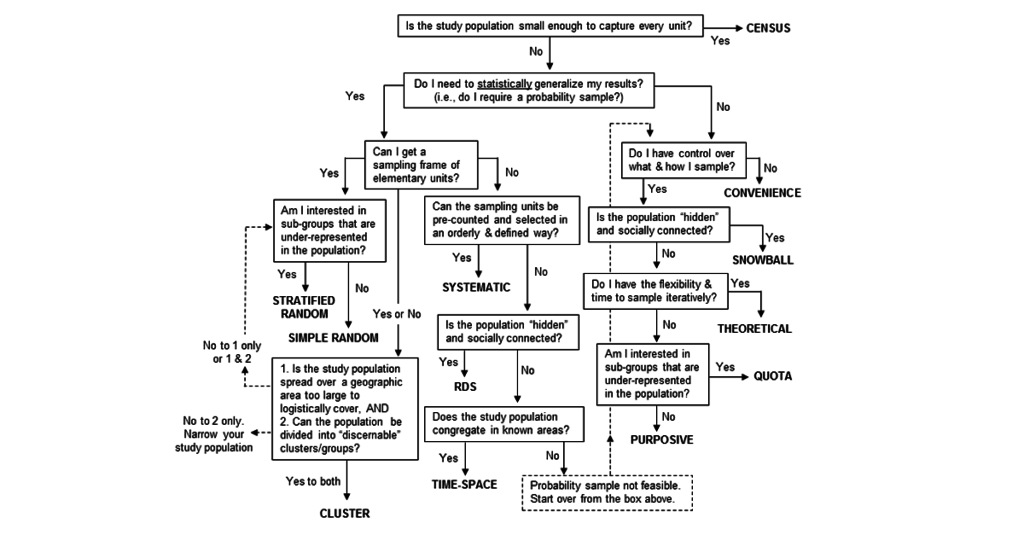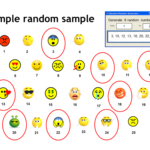This blog post is the second in a series of three sampling-focused posts.
The credibility and usefulness of our research and evaluation findings are inextricably connected to how we select participants. And, let’s admit it, for many of us, the process of choosing a sampling strategy can be drier than a vermouth-free martini, without any of the fun. So, rather than droning on comparing this or that sampling strategy, we present a relatively simple sampling decision tree.
Just start at the top with the first question and follow the pathways indicated by your responses until you’ve arrived at a sampling approach.
Below are some keys terms that you’ll need to know as you navigate the path. Note: for an explanation of the actual sampling strategies referred to in this post, refer to the first blog post in our sampling series, Emojis convey language, why not a sampling lesson too?.
Before you start, an important word of caution… the decision tree is meant to be a guide to get you thinking about sampling, not an excuse to stop thinking.
Each research and evaluation context is unique and needs to be thought of as such. For example, a random sample can be employed in qualitative projects in which no statistical analysis is involved; it may enhance the representativeness (or at least the appearance of such) of your sample. Another thing to remember is that two or more sampling strategies can be used in a single project, to sample different populations/groups, to sample items in a staged manner, or some other combination.
Get climbing!
Sampling Decision Tree (adapted from Guest 2015):
Guest, G. 2015. Sampling and selecting participants in field research. In, Handbook of Methods in Cultural Anthropology, 2nd ed., H. Bernard and C. Gravlee (eds.). Pp. 215-250. Lanham, MD: Rowman & Littlefield.
Sampling decision tree: useful glossary terms
Census
A study collecting data from/about EVERY item in your study population (i.e., selecting all elements in your entire sampling frame).
Elementary unit
The unit we collect data from or about. It is often the same as the sampling unit, but not always. For example, we may randomly choose schools for inclusion into a study (sampling units), but may ask questions of students within each school selected (elementary unit).
Non-probability sampling
Any method of sampling that does not utilize random selection procedures. Non-probability sampling does not allow the researcher to determine the probability of each sample member being selected.
Probability sampling
Any method of sampling that employs some form of random selection of sampling units. Probability sampling allows the researcher to determine the probability of each sample unit being selected (e.g., one can estimate population parameters with confidence intervals).
Sampling frame
A list of all the elements in your study population.
Sampling unit
The item (person, place, event, etc.) that is selected/sampled for inclusion into the study. For example, if you are sampling high school students, each student would be your sampling unit.
Study population
The entire group of elements/items in which your study is interested. Units to be sampled can be individuals, households, institutions, communities, events, items (e.g., documents), or some other entity. The study population is defined by the researcher and based on the study objectives.
Study sample
A subset of the larger study population from which it is selected.





